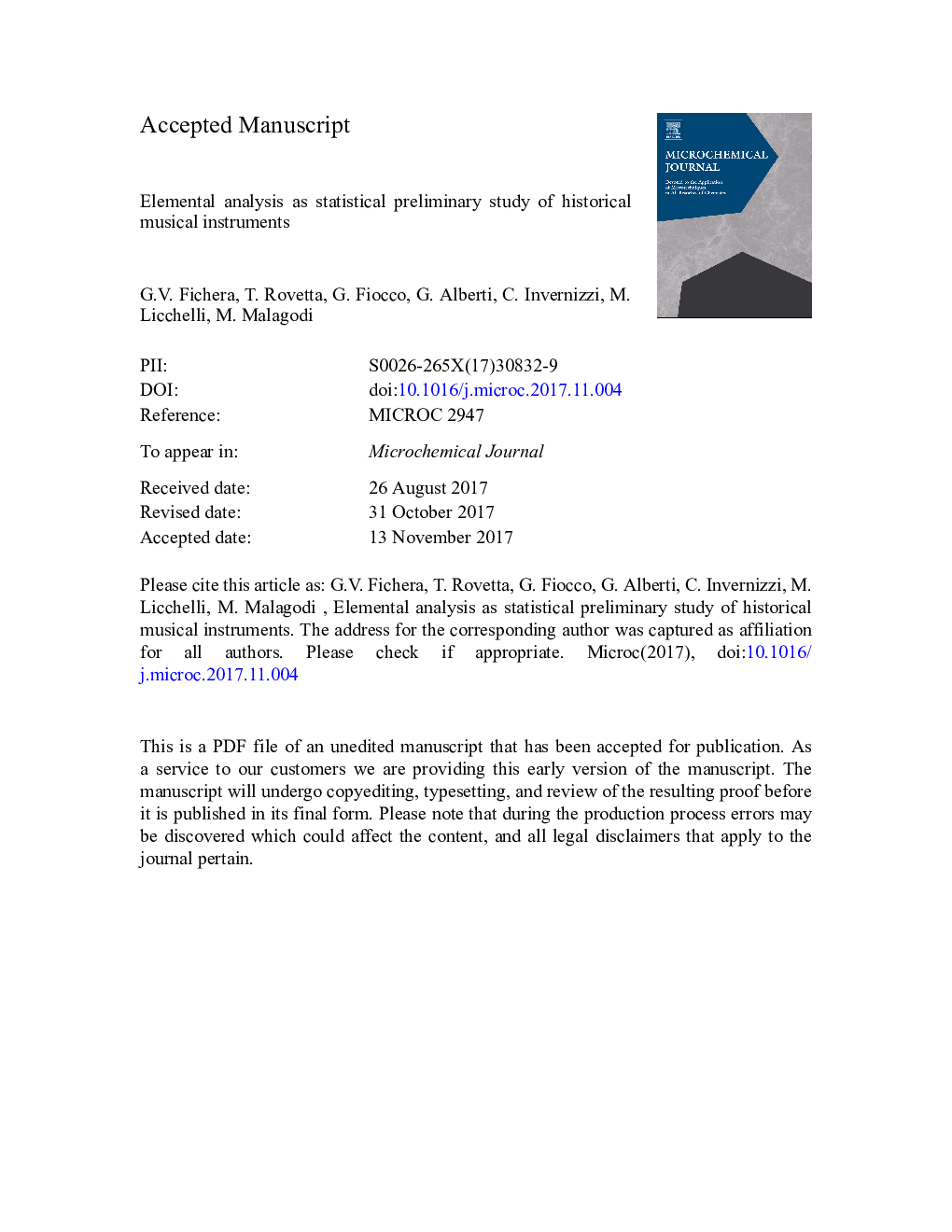| Article ID | Journal | Published Year | Pages | File Type |
|---|---|---|---|---|
| 7640997 | Microchemical Journal | 2018 | 27 Pages |
Abstract
In this work, non-invasive and micro-destructive analyses could be combined through portable X-ray fluorescence spectrometry (PXRF) and scanning electron microscopy (SEM) with an EDAX spectrometer (SEM-EDX) on 24 fragments of the Sgarabotto collection. Principal Component Analysis was applied to classify relics, highlighting the most relevant and particular elements in the dataset. The principle of transformation is the extraction of maximum variance for each successive new variable. This procedure leads to the separation of valuable information from noise and to the selection of a small number of influential and statistically significant variables. The application of this analytical procedure leads to (i) assessing the existence of elemental markers of specific historical periods and/or manufacturing areas; (ii) characterizing the materials that the layers of a selected group of fragments are composed of; (iii) identifying any correlations between different fragments.
Related Topics
Physical Sciences and Engineering
Chemistry
Analytical Chemistry
Authors
Fichera G.V., Rovetta T., Fiocco G., Alberti G., Invernizzi C., Licchelli M., Malagodi M.,
